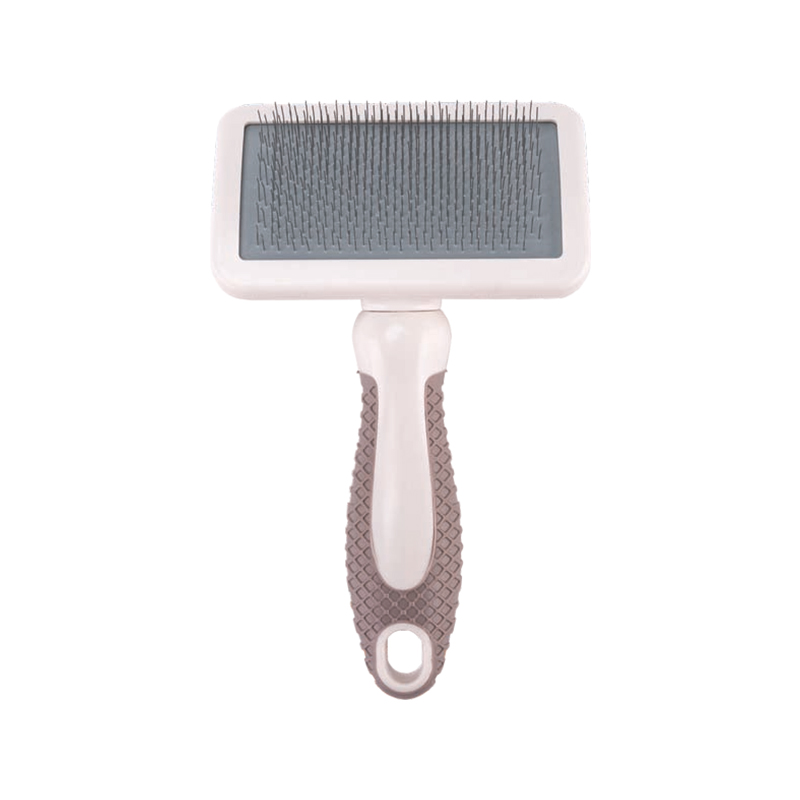What exactly is the problem we're solving?
Every morning, millions of pet owners face the same battle: sipping coffee while staring down at clothes, furniture, and carpets blanketed in stubborn pet hair. Conventional lint rollers offer temporary relief but generate endless waste, while vacuums often scatter more fur than they capture. Enter the Pet Hair Remover Comb – a game-changing tool redefining fur management through ingenious engineering and sustainable design. Unlike disposable rollers that merely skim surfaces, these combs feature precision teeth that penetrate fabric depths, extracting embedded hair with surgical efficiency while remaining gentle on delicate textiles. As remote work expands and homes double as offices, this unassuming tool has become the silent hero of hygienic living spaces and professional video calls alike. — but why does this simple device now matter more than ever?
Why the tool matters today: social shifts that changed pet care
Pet care is no longer a niche pastime. In many communities pets are treated like family and businesses are adapting to that reality, which has broadened demand for grooming and comfort products. Office culture is shifting to accommodate animals, and pet owners expect tools that are effective, gentle, and aligned with sustainability values. These broader social shifts push simple grooming tools into the spotlight as part of everyday hygiene and lifestyle choices.

Why Pet Hair Defies Conventional Cleaning
Pet hair clings with tenacious intelligence due to three scientific factors: microscopic scales on each strand hook onto fabric fibers like velcro; natural oils create adhesive bonds; and static electricity generates magnetic attraction between hair and surfaces. Standard washing machines worsen the problem by embedding hairs deeper during cycles. Vacuums struggle on upholstery contours and often lack specialized attachments for fur removal. Disposable lint rollers address surface-level hair but fail against woven-in fur and contribute to landfill waste – a growing concern among eco-conscious consumers.
The societal shift that makes a simple grooming tool strategic
More people are keeping companion animals close to home and to daily routines, which means pet hair is not a niche nuisance but a mass-market problem. Changes in work arrangements and workplace culture have encouraged pet adoption and more time spent with pets at home and at work. Those cultural shifts make grooming and small, effective cleaning tools an everyday purchase for households and offices alike.
Why "comb" matters among many hair-removal formats
Consumers see pet hair control as a three-tier problem: gathering loose fur from animals, removing embedded hair from fabrics, and preventing future shedding where possible. The Pet Hair Remover Comb sits at the center of these tasks because it combines direct de-shedding with surface cleaning. Compared with disposable rollers or single-purpose brushes, a well-designed comb is reusable, easy to maintain, and versatile across coat types and household fabrics.
Practical strengths:
it captures loose fibers before they migrate into textiles;
it detangles light mats when used gently;
it doubles as a spot-cleaner for upholstery and car interiors.
That multifunctionality is why retailers can position the comb as both a grooming and a home-cleaning solution — widening its appeal beyond traditional pet-grooming shoppers.
Design and materials: balancing efficacy, safety, and sustainability
Technical choices determine performance and brand positioning. Here are the critical design decisions every maker should consider, explained without jargon:
Teeth profile and spacing — choose a geometry that lifts hair without pinching skin; finer spacing works better on short, dense coats while wider spacing handles long fur.
Edge finish — smooth, rounded teeth edges protect delicate skin and reduce static cling to fibers.
Handle ergonomics — a non-slip grip and slightly angled neck reduce wrist strain for repeated use; this improves perceived quality and lowers returns.
Materials and sustainability — durable polymers and plant-based or recycled components satisfy buyers who prefer eco-conscious products; a product that lasts longer and uses safer materials becomes a differentiator in a crowded market.
User experience: step-by-step usage that sells
Make the product's value obvious through simple instructions that also work as retail copy. A recommended flow:
Start with a quick warm-up stroke across the coat to capture loose fur.
Use short, gentle passes over furniture to pull embedded hair to the surface.
Clear accumulated hair from the comb after every few passes — a feature many shoppers test while in-store.
Store in a visible spot to signal habitual use and to serve as a recurring brand reminder.
A Pet Hair Remover Comb is more than a grooming implement; it is a behavioral catalyst that reduces household friction, supports pet wellbeing, and opens commercial opportunities across retail, grooming services, and workplace wellness. Brands that combine thoughtful engineering, clear education, and responsible packaging can turn a humble comb into a signature item in modern pet care assortments. If your goal is to convert interest into revenue, position the tool as a durable, eco-minded solution and let practical demonstrations do the selling.